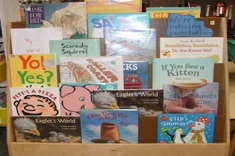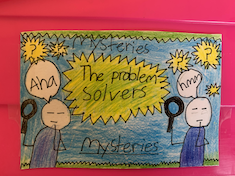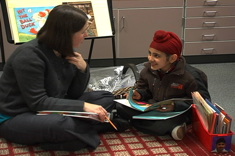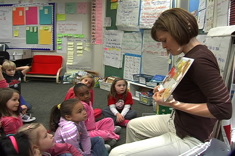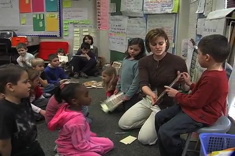In the first few weeks of school, I am attempting to understand a whole new class as individual readers (yikes!). I am trying to discover where, when, why, and what they like to read. Even more important, I want them to start thinking about and recognizing their interests, wants, and desires as readers.
Last year, I remember approaching reader identity (how kids think and feel about themselves as readers) with a few minilessons where we talked about favorite books. Students brought in favorite books to share and keep in the classroom, and we discussed our favorite places to read and favorite times to read. I originally discovered these wonderful ideas for discussion in Kathy Collins’s book Growing Readers. Kathy’s book also taught me the importance of teaching children explicitly about how and why we care for books in the classroom.
This year I want to have more conversations with students about why we read. I have the expectation as a first-grade teacher that all of my students should be reading by the end of the year (parents have this expectation as well). I have been passing this expectation of learning to read and learning to love reading on to the kids without much discussion in previous years.
This year, I am asking the kids why we read. What is so special about reading? I am also thinking about how to get the kids to talk more with their classmates about reading. I noticed last year that it took some of my students a whole year to feel comfortable saying what was on their mind. I want to get them feeling safe about sharing right from the start!
I am tackling this goal through a few minilessons linked to picture books I discovered last summer. Throughout the summer, I jotted down the titles of picture books that support conversation about who we are as readers. Here’s what I am using to explore reader identity with students at the start of the year. Through read-aloud and discussion, each book helps us explore a different aspect of reader identity—the different ways we read, how we care for books, why we read, and why we need to share our reading with others.
Reader Identity
Baby Bear’s Books by Jane Yolen
I was sold on this book when I saw the author present it at a conference. I know the title seems babyish, but don’t worry. This book contains a little bear’s reading adventures during the course of a day. It mirrors experiences that readers who love books have at home.
I am hoping the kids take the lead and connect to how Baby Bear enjoys reading in bed, reading a book in which he already knows all the words, reading pictures, not words, and reading to his big brother. I envision myself referring to Baby Bear when we talk about what reading looks like during reading workshop because I know I will have kids picture-reading, reading books they have memorized, and reading with others, and of course I’ll have some already reading!
Other great things about this book are wonderful rhythm, terrific rhyme, and great illustrations by Melissa Sweet.
Caring for Books
Book! by Kristine O’Connell George
I first picked up this book because it has very little text on each page, and because after hearing it read aloud a few times, the students can read it on their own. I then loved how the boy in the story talks to his book (a present he receives). I thought about how the boy “plays” with his book throughout the day. He takes his book around the house (like a three- or four-year-old would) and uses it as a hat, takes it on a wagon ride, reads it in his secret place, and takes it to bed. I envision the kids and I discussing how to treat books in the classroom . . . what it looks like to hold a book, share a book, and put books away. I can see students modeling this for one another.
Why Read?
Reading Makes You Feel Good by Todd Parr
After discussing why reading is important with partners and jotting down a quick list of reasons, I thought it would be interesting to compare our list of thoughts with those of author Todd Parr. We will be able to experience Todd’s reasons for reading. I want kids to experience the pleasure of reading, and I am hoping their thoughts as well as Todd’s help to create positive feelings about reading.
Sharing Thinking
Taking a Bath with the Dog and Other Things that Make Me Happy by Scott Menchin
This story contains simple text with some repetition that supports beginning readers. I know that after hearing it read aloud a few times, the kids will come to it on their own. I love how the colors and pictures are cheery and simple. This book contains many different types of punctuation, such as periods, question marks, exclamation marks, and my favorite to discover with kids, yes . . . the ellipsis.
I find partner work and collaboration in the classroom really helps students share learning, love reading, and take risks they would not have otherwise taken. This book will help kids discover the importance of conversation with others. Sweet Pea is lost until she connects with others. It is after she observes and asks questions that she can understand and answer the question “What makes you happy?” for herself. This kind of thinking and knowing ourselves is hard for kids (and me sometimes). I am hoping this book will help inspire my reluctant kids to feel more brave as they share their ideas in our classroom community.

